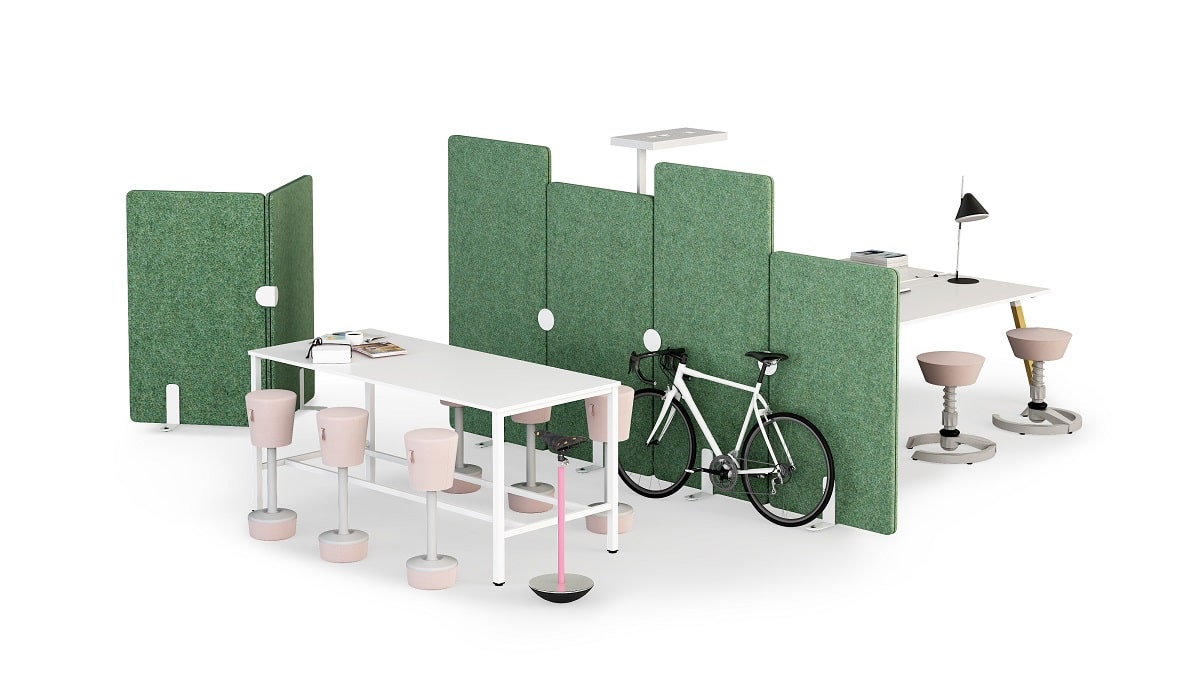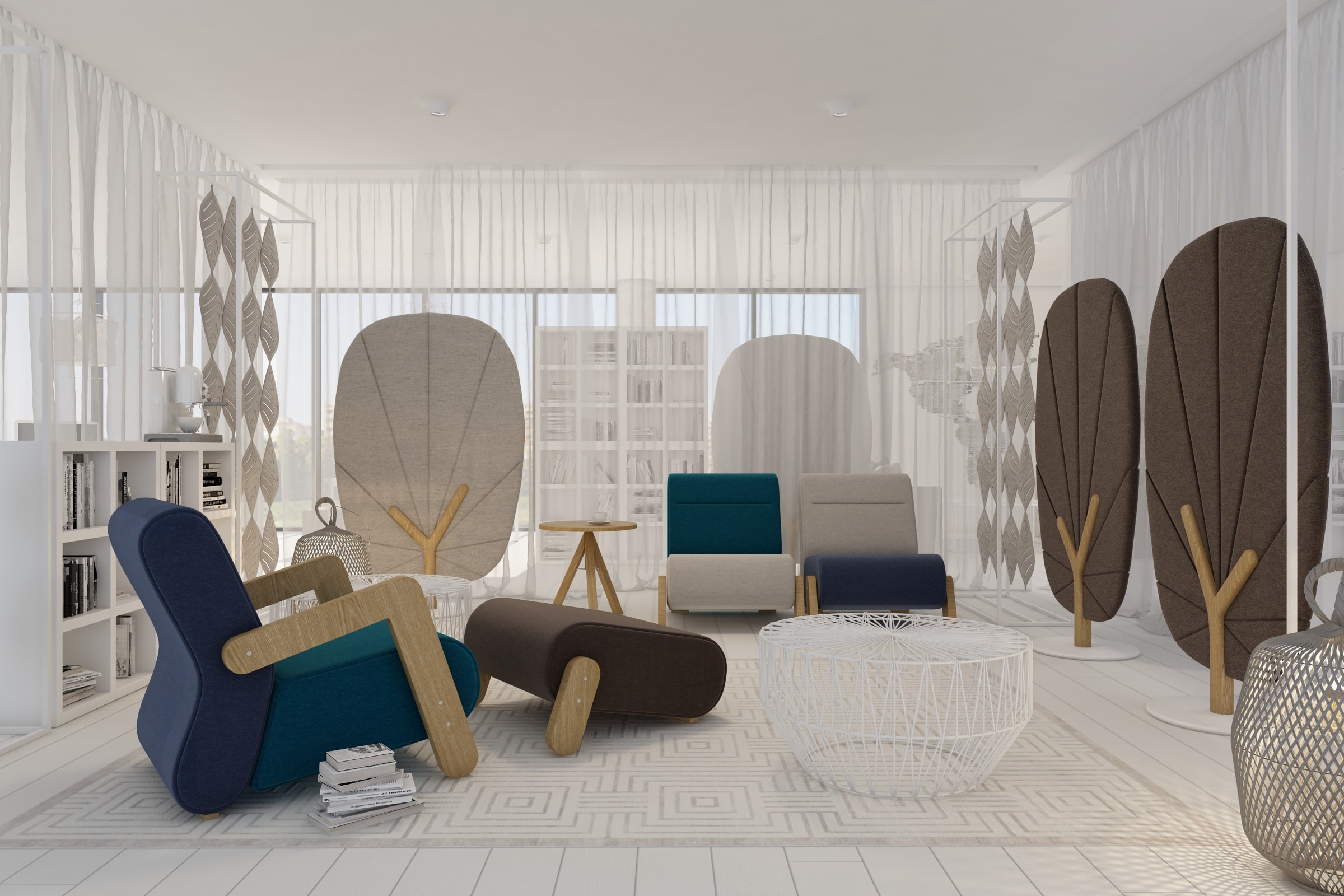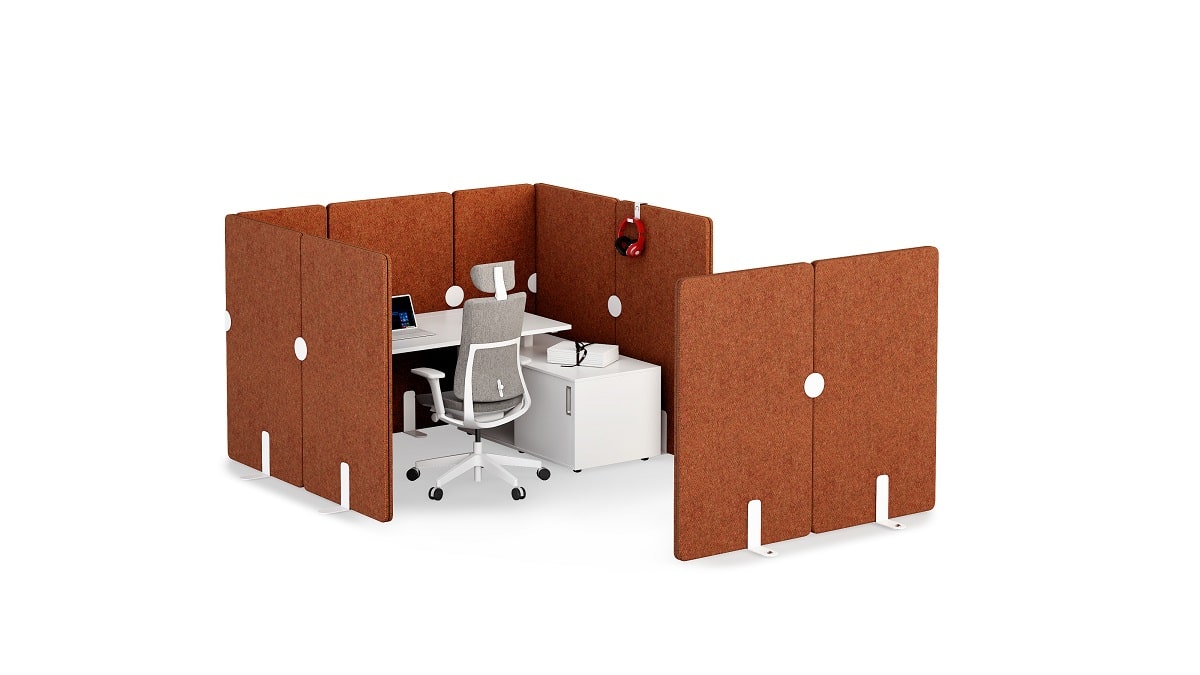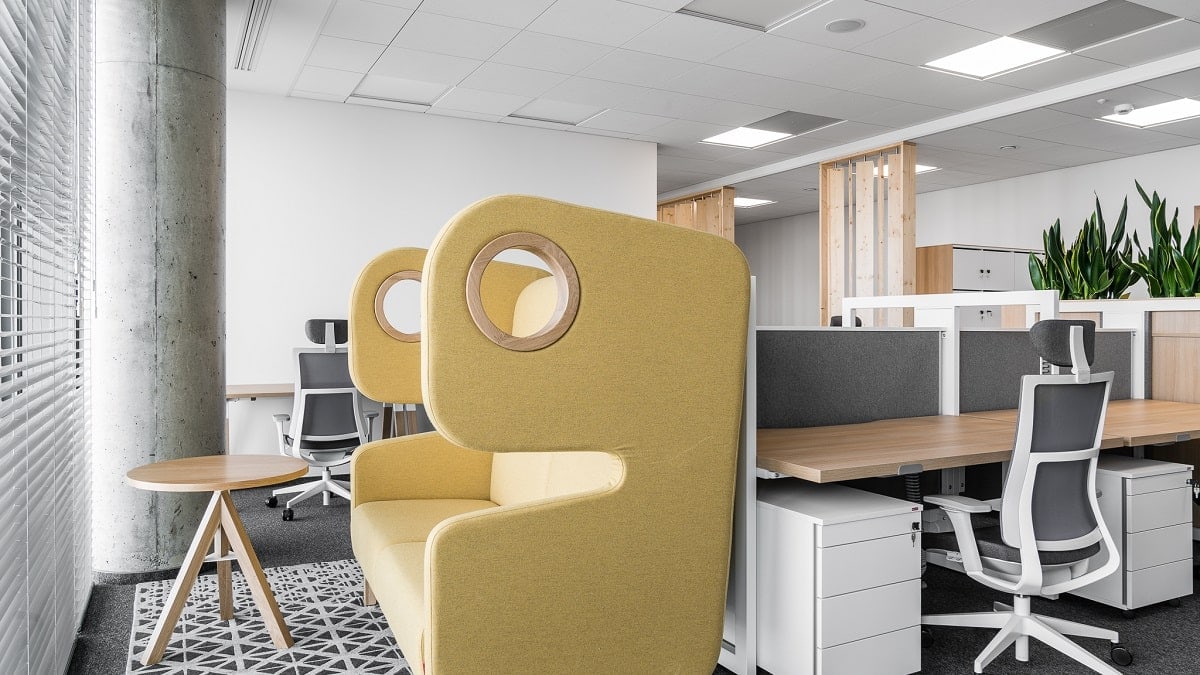Privacy in an open-plan office. Is discretion even possible?

The most popular office layout is open-plan space, which accommodates many employees at the same time. This means having to share space with others as having one’s own office is usually only reserved for those in the most senior positions in the company. Open-plan offices have many advantages, such as a better flow of information, easier communication between people in the same department and the ability to accommodate more workstations in a smaller space. However, in open-space based workplaces, there is a challenge in terms of visual and acoustic privacy. The feeling of a lack of confidentiality translates into a decrease in work efficiency, which is why office furniture designers are trying to solve this problem. Read the article and find out how to improve employee privacy in an open-plan office with simple and flexible solutions.
What are the characteristics and challenges of an open-plan office?
According to the definition, an open-plan office is a room without partitions that contains workstations for multiple people. In some companies, such spaces bring together employees from a single department, while in others they bring together employees from across the organisation. The beginning of open-plan offices in our country was in the 1990s. The 1980s saw the emergence of multinational corporations in Poland after the political changes. The open-plan workplace layout has many advantages, especially for business owners, who can rent smaller office spaces this way. Open spaces are also conducive to building relationships between employees and the rapid exchange of documents or information.
However, open-plan offices also present a number of acoustic and visual privacy challenges. Employees often have to work in an environment with a lot of noise, which is caused by conversations, tapping on keyboards and printers or ventilation systems running. Being in a space shared by many people leads to disruptions in communication, hinders concentration and poses data security and discretionary risks during sensitive conversations.
Lack of space for focused work
One of the problems associated with open-plan offices is the difficulty faced when performing tasks that require focus and high levels of concentration. The conversations of people beside you about professional or private topics, the noise of equipment, the chatter and the constant movement of other employees all cause distractions, and this leads to a decrease in productivity and increased stress over short deadlines.
Different temperature and lighting requirements
Each employee is different in terms of needs and character. Some like to be the centre of attention and boast about their ideas or achievements, while others come to work to complete their tasks in peace. Similarly, individuals’ preferences for temperature or the colour of lighting differ. In an open-plan office, this can lead to conflicts and a lack of comfort for employees who will be too cold or hot. Companies need to find ways to meet the different needs of their employees in order to maintain a positive atmosphere and job satisfaction.
Open space and the employee privacy crisis
Working in an open-plan office requires being with a variety of people for long hours, where some people behave more loudly than others. In many companies, desks facing each other are not separated by anything. Because of this, those closest can hear what their colleague is talking about and see what they are doing. There is no room for visual privacy here, nor for confidentiality of the information provided. Such conditions can be distracting for employees and can increase stress levels, nervousness and generally have a negative effect on the psyche. Companies need to consider solutions that allow employees to maintain a sense of privacy while still providing easy communication and collaboration.
Why is privacy in an open-plan office so important? The employee’s right to privacy
Open-plan offices are ideal for companies looking to reduce their running costs, as they allow smaller spaces to be rented. However, employers should not forget that an employee’s right to privacy is a fundamental one, and its protection is important from both an ethical and legal perspective. Taking this aspect into account when arranging the office space contributes to creating an atmosphere of trust and respect, and this in turn influences employee well-being, efficiency and loyalty to the company.
According to the expert
It is the lack of visual and acoustic privacy that many employees point to as the biggest disadvantage of open-plan offices. This often leads to stress, emotional exhaustion and conflict between employees. Sounds coming from all sides or a supervisor or another employee glancing in the direction of the monitor cause a decrease in productivity and creativity, and a feeling of being restricted, making it more difficult to produce good results. Therefore, companies should take care of the possibility of having privacy by looking for appropriate solutions that balance communication, collaboration and the protection of each person’s privacy
– says Eliza Donek, Product Manager at Mikomax.

How do you create comfortable workspaces within open spaces that support the employees’ visual privacy?
Even several workstations in one space are a source of different stimuli that make it essentially impossible to maintain concentration in such a place. The chatter of co-workers, ringing phones, the noise of devices and the constant movement of different people is the enemy of efficiency.
Partitions for open space – acoustic and aesthetically pleasing
Mobile partitions are one of the popular solutions used in open-plan offices to increase employee privacy. They can be made of different materials, such as glass, fabric or acoustic panels, and come in different shapes. An interesting solution is sound-absorbing Tree partitions, which are shaped like a tree. Rich colours, natural materials and a look that fits in with biophilic design mean that they will not only help to fence off workstations, cancel out noise and provide more privacy, but will also be an attractive design element in the office. They make it possible to create more private spaces, while maintaining openness and accessibility for colleagues.
Mobile acoustic walls in a dynamic shared space
The Soniq mobile acoustic wall system allows flexible adaptation of the office space to meet the needs of employees. High partition walls, placed on the sides or in front of the desk, guarantee the employee a great deal of privacy and tranquillity. They are movable thanks to rollers mounted in the stabilising feet. It’s a solution that can easily be repositioned to create a quietened and dedicated space where it is needed. Acoustic walls of this type have the option of being connected perpendicularly or in series. They allow employees to quickly arrange a space for focused work or organise team meetings while maintaining visual privacy.
For more advantages of mobile acoustic partitions, see the text: Divide and conquer – with the modular office wall system.
Flexible storage solutions and workplace customisation
Another way to improve privacy in an open-plan office is to use flexible storage solutions and individualise workstations. Employees will appreciate being able to use cabinets, shelves or storage modules that can simultaneously fence off their workspace from others.

Open-plan office design – how to improve work efficiency with office furniture
Open-plan office design can make a significant difference to productivity. Correct space management and the selection of modern office furniture are crucial to the comfort and productivity of staff. Here are some tips on how to improve your open-plan office:
Chillout rooms – important places for relaxation and respite
To provide employees with a space for respite from the hustle and bustle of an open-plan office, it is worth investing in comfortable soft seating furniture such as armchairs, pouffes, sofas or recliners. You can also add plants or other decorative elements to influence the atmosphere. A chillout zone at work allows employees to take a break from their duties for a while, reset and talk about casual topics with colleagues. A body tired of sitting at a desk for long periods of time will be happy to rest on a designer sofa.
Chillout rooms should also provide employees with some privacy. Partitions, screens or modular furniture can be used to create more secluded corners.
Find out more about arranging a chillout room in the text: What makes a break-out space great.

Creative brainstorming spaces
Every office needs a space where employees from one department can brainstorm creatively. It is worth opting for furniture with wheels, e.g. conference tables, which can be easily moved and reconfigured to suit the needs of the team. The space should be equipped with whiteboards and flip charts on which employees will write down their ideas and thoughts.A creative space cannot be complete without Ligo modular furniture, which is like those popular building blocks. They allow you to independently build spaces for individual work, creative group work and relaxation solutions. A desk, assembled by one employee, can in a moment become a table on which the team will review documents together. The only limitation is your imagination.
Desks for standing and seated work
Standing and sitting desks help employees to change positions throughout the day, which can increase comfort at work and reduce the risk of health problems. It is worth choosing furniture with easy height adjustment, such as desks with an electric or manual mechanism. The tabletop on the Stand Up R model can be raised or lowered almost without taking your hands off your work by means of a simple mechanism. Simply link a few together to enjoy shared, single-height adjustable bench desks for group work.
Support for a seated position is just as important as the ability to work standing up. By providing ergonomic office chairs with adjustable height, seat depth, armrests and backrests, we can ensure that employees are comfortable and have a healthy working posture.
Ensuring employee rights to acoustic and visual privacy in open space.
Check out our range of office furniture to improve employee privacy >>
